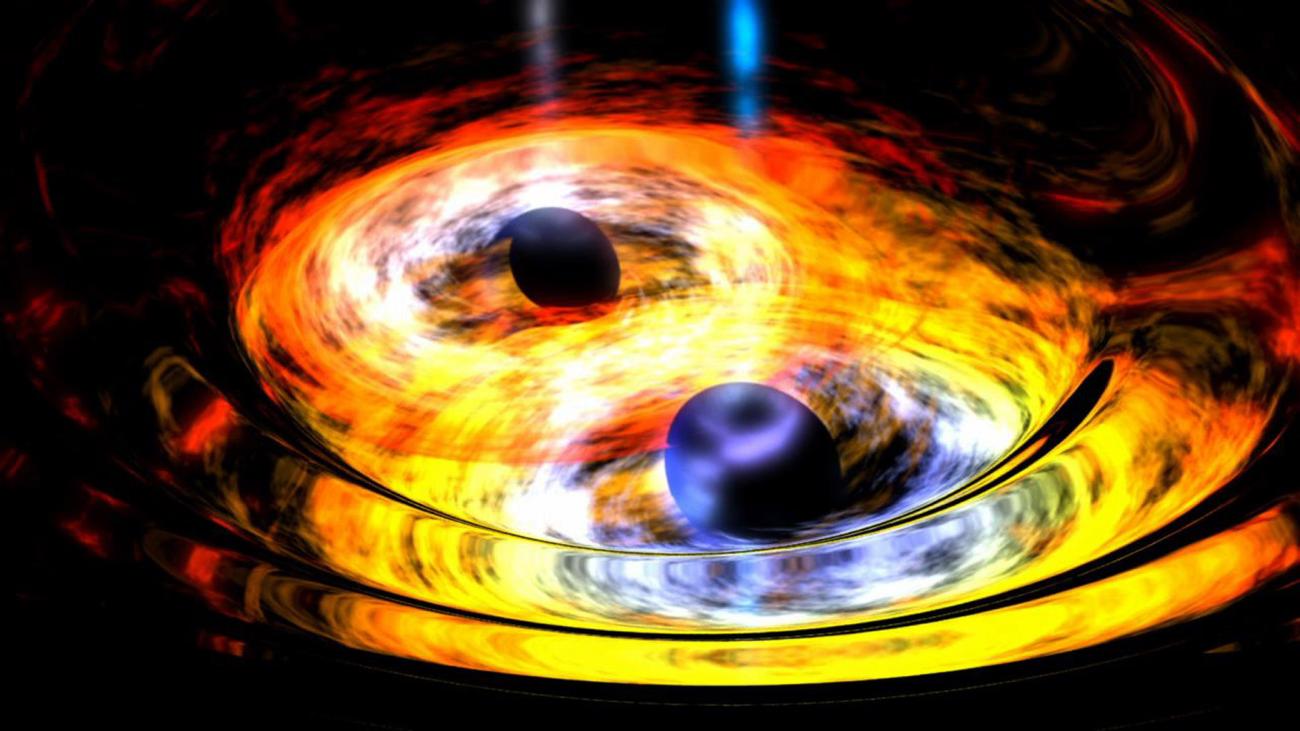©Copyright 2018 GEOSCIENCE RESEARCH INSTITUTE
11060 Campus Street • Loma Linda, California 92350 • 909-558-4548

Einstein’s general theory of relativity was published in 1915. It again made headlines in 2017 with two major reports about gravitational waves that further confirmed the theory’s last remaining major prediction. On October 3, the detection of gravitational waves from coalescing black holes was awarded a Nobel Prize. On October 16, the observation of correlated gravitational and electromagnetic (light) waves from the merger of two neutron stars was announced.

Gravitational waves are distortions in space-time that radiate like light waves from a lamp, sound waves from a speaker, or water waves from a stone dropped in a pool. The distortions are caused by some of the most cataclysmic processes in the Universe, such as colliding black holes, coalescing neutron stars, and collapsing stellar cores that result in supernovae. In the 1970s, indirect evidence for gravitational waves came from measuring the orbital period of binary neutron stars. In 1979, the U.S. National Science Foundation funded research for more direct detection of gravitational waves. As a result, the California Institute of Technology (CalTech) and the Massachusetts Institute of Technology (MIT) developed the Laser Interferometer Gravitational-Wave Observatory (LIGO) that can detect space-time oscillations that are thousands of times smaller than the nucleus of an atom. The kilometer-size detectors are located in Livingston, Louisiana and Hanford, Washington. Additional information about gravitational waves and their detection can be found in:
- Science ---
- Scientific American ---
- National Geographic ---
The first direct detection of gravitational waves occurred on September 14, 2015, when LIGO physically sensed distortions in space-time that lasted a fraction of a second. The passing gravitational waves were generated by two colliding black holes 1.3 billion light-years away. Since then, three other detections of black hole mergers were made on December 26, 2015, January 4, 2017, and August 14, 2017. The last observation was made by the two LIGO detectors as well as by a third detector in Italy called Virgo. The 2017 Nobel Prize in physics was awarded to three physicists "for decisive contributions to the LIGO detector and the observation of gravitational waves." Over forty years ago, Kip Thorne at CalTech and Rainer Weiss at MIT outlined details of the necessary interferometers. Since 1994, Barry Barish of CalTech has helped lead out in constructing the LIGO facilities and establishing the LIGO Scientific Collaboration. Additional news about this discovery and the resulting Nobel Prize can be found at:
On August 17, 2017, gravitational waves from the merger of two neutron stars 130 million light-years away were observed for almost two minutes. The directional information from the two LIGO detectors and the Virgo detector made possible the correlation of these gravitational waves with electromagnetic light waves from a galaxy in the constellation Hydra. The seconds-long gamma ray burst of electromagnetic waves was detected by the Fermi Gamma-Ray Space Telescope. Because a neutron star is extremely dense, with a mass similar to that of our Sun but a diameter of only a few miles, a gamma ray burst can contain as much energy as the Sun emits in a trillion years. Dozens of other telescopes tracked the “afterglow” of the explosive neutron star merger at x-ray, ultraviolet, optical, infrared, and radio (electromagnetic light) wavelengths. The results were announced on October 16 and published in a paper with more than a thousand authors, including a Seventh-day Adventist physicist at Andrews University.
The announcement included several major news headlines: Both gravitational waves and electromagnetic (light) signals were detected from the same source. The speed of gravitational waves is the same as the speed of light, as predicted by general relativity. Since all gravitational wave signals from neutron star mergers would have the same intrinsic “loudness”, such signals can eventually be used to estimate the distance to merger-containing galaxies, and thus the Hubble constant and the expansion rate of the Universe. The kilonova neutron star merger rapidly produced elements heavier than iron for a total mass equivalent to 10,000 Earth masses. Additional news about the detection and implications of the merging neutron stars can be found in:
- Science ---
- National Geographic ---
- New York Times ---
- Washington Post ---
General relativity theory that predicts and explains gravitational waves describes the non-intuitive laws governing extreme conditions in the Universe at large sizes, energies, and gravitational fields. These extreme conditions result in what appear to humans as cataclysmic events in space and contortions in time. For those interested in the relation of religion to science, they suggest a God who governs the universe in ways that may be beyond our easy comprehension and who has a thousand ways to do things of which we know nothing.
by Ben Clausen, PhD
Senior Scientist
Geoscience Research Institute